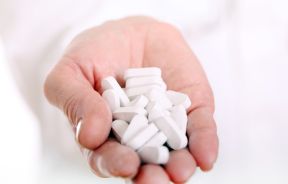FDA-Approved Medical Devices May Not All Be Safe; Premarket Studies Exhibit Bias, Limitations

Medical devices range from the simple, tongue depressors, for example, to the highly complex, let's say laser surgery devices. While many pose little risk to patients, the high end tools may be capable of saving your life… or doing you great harm. For this reason, the Food and Drug Administration (FDA) requires some medical devices provide evidence of safety and effectiveness through a series of studies both before and after they come onto market.
Within the category of high-risk devices, a new study finds, there is tremendous variation in both the number and quality of pre- and post-market studies of safety and effectiveness. In fact, just 13 percent of postmarket studies were completed within three to five years after a product gained approval, the Yale researchers discovered.
“Our findings of limited premarket evidence generation and few FDA-required postmarket studies highlight the need for continued study” to advance understanding of a medical device's safety and effectiveness, noted the authors.
It is the responsiblity of the FDA to decide which medical devices can be sold and which cannot. The FDA begins by placing each product into one of three risk-based categories:
- Class I devices, including elastic bandages, examination gloves, and hand-held surgical instruments, typically present the lowest potential for harm while being relatively simple in design. The FDA imposes only general rules to maintain standards for these devices.
- Class II devices, including power wheelchairs and infusion pumps, must comply with general and special controls, including labeling requirements, performance standards, and postmarket surveillance.
- Class III devices require more controls. These products, including replacement heart valves and silicone breast implants, must provide a reasonable assurance of safety and effectiveness before and after going to market.
High-risk devices — those that support or sustain life, prevent illness, or present potential, unreasonable risk to patients — generally follow the FDA’s Premarket Approval (PMA) pathway. For products following this path, the FDA requires evidence of safety and effectiveness up-front (via premarket studies), and, if changes are made to the device after it's been on the market, the agency permits a supplemental application including evidence of safety and effectiveness (via post-market studies).
To expedite access to new technologies, the FDA has adopted more flexible premarket evidence requirements over time. Yet, concurrently the regulatory agency has become “increasingly committed to evaluating device safety and effectiveness throughout the ‘total product life cycle,’” wrote lead researcher, Dr. Joseph S. Ross, Yale School of Medicine, and his co-authors. And so, for this new study, they ask a very simple question:
How many and how good are the studies of safety and effectiveness for each product?
Facts of the Matter
The research team identified every high-risk device approved by the FDA via the PMA pathway in 2010 and 2011 and then they sorted studies by type, status, and other features. The researchers discovered the FDA granted initial marketing approval via the PMA pathway to 28 high-risk medical devices during the study period. They identified 286 total studies for these devices: 82 premarket (29 percent) and 204 postmarket (71 percent).
Nearly all the devices had been cleared on the basis of just two studies. Overall, three or fewer studies were conducted for 46 percent of the devices. Only six out of 33 post-approval studies (18 percent) and 12 percent of the manufacturer/investigator-initiated postmarket studies had been completed following initiation.
Meanwhile, for 18 percent of the devices, no postmarket studies had been conducted.
Acknowledging that the “right” number of studies should vary depending on risk and use, the authors note that “pending legislative efforts will only further reduce premarket evidence requirements for medical devices.” Going forward, let the patient beware.
Source: Rathi VK, Krumholz HM, Masoudi FA, et al. Characteristics of Clinical Studies Conducted Over the Total Product Life Cycle of High-Risk Therapeutic Medical Devices Receiving FDA Premarket Approval in 2010 and 2011. JAMA. 2015.



























